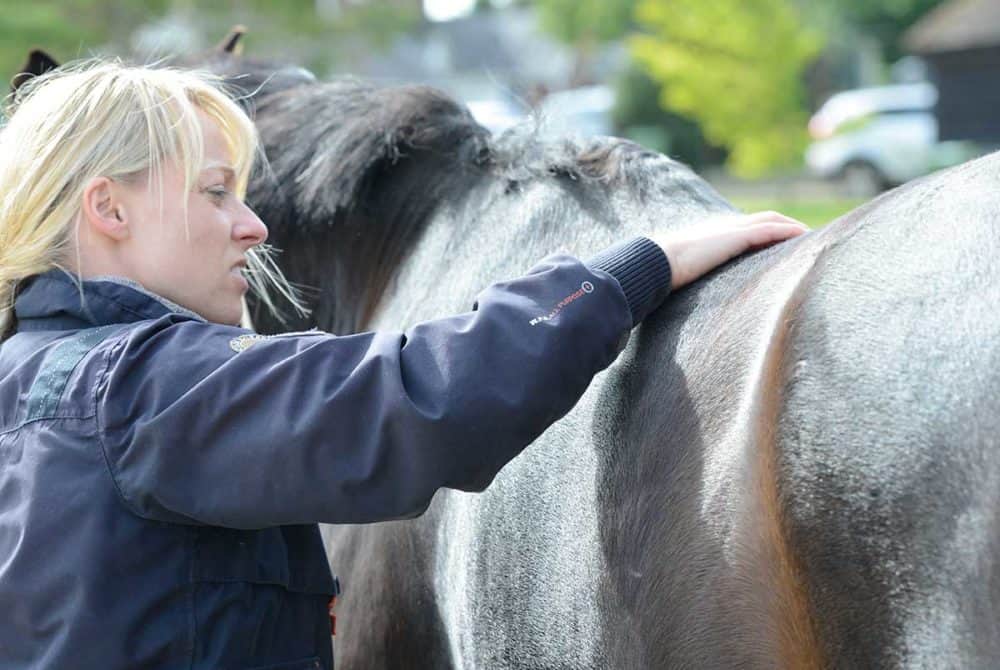Kissing spines
Posted 27th February 2020
Kissing spines are a common cause of back pain in horses, but modern treatments have a high success rate, as vet Frances Henson explains

Kissing spines, also known as over-riding dorsal spinous processes, refers to a condition where the dorsal spinous processes of the thoracic or lumbar spine make contact.
Your horse’s back has 18 thoracic vertebrae and five or six lumbar vertebrae. These vertebrae are specialised in each region to support the horse’s musculature and allow co-ordinated movement. In the thoracic region (under the saddle) and lumbar region (loins) the vertebrae have particularly elongated vertical protrusions called dorsal spinous processes (DSP) to which the muscles that extend the back are attached. The interspinous ligaments run between the DSP, holding them in position. In normal horses, there’s space between each one. However, in some, the DSP are too close and make contact, leading to inflammation and pain and, in some cases, fusion of the bones.
What’s the cause of kissing spines?
The exact cause of kissing spines isn’t yet known. It occurs in all breeds, although studies have shown Thoroughbreds to be particularly affected. While it’s often believed that the condition occurs in more short-backed horses, because they have less physical space for their vertebrae, or those with a dipped back, this hasn’t been proven. What we do know is that it’s not possible to diagnose kissing spines just by looking at a horse, and they don’t seem to be born with the condition. In one study of foals, none were found to have evidence of kissing spines, suggesting that ridden work may change the orientation of the DSP. Loading of the back, such as occurs when ridden, leads to extension or dipping, which brings the DSP closer together, increasing the likelihood of kissing spines developing in susceptible horses.
Can it be prevented?
It’s extremely difficult to prevent kissing spines, particularly if the bones are close together before the horse starts his ridden career. Encouraging long and low work and incorporating back stretching exercises will build core strength and reduce the chance of kissing spines becoming painful, even when the DSP are close together.
Spot the signs
The clinical signs of a horse with back pain from kissing spines are very non-specific, so may include…
- subtle loss of performance
- severe resistance to being ridden
- reluctance to allow saddling or mounting
- back stiffness
Pick up a copy of April Horse&Rider, on sale 5 March, for more information on how kissing spines is diagnosed and treatment options.










